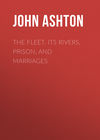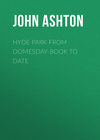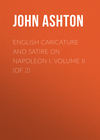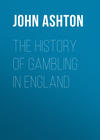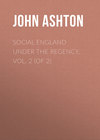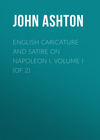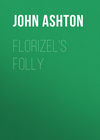Kitabı oku: «The Devil in Britain and America», sayfa 15
‘“We lay the wind in the Divellis name,
[It sall not] ryse quhill we lyk to rease it again!”
‘And if the wind will not lye instantlie [after we say this] we call wpon owr Spirit, and say to him:
‘“Thieffe! Thieffe! conjure the wind, and caws it to [lye …]”
‘We haw no power of rain, bot ve will rease the wind quhan ve pleas. – He maid us beliew […] that ther wes no God besyd him.
‘As for Elf-arrow-heidis, the Diuell shapes them with his awin hand, and syne deliueris thame to Elf-boyes, who whyttis and dightis73 them with a sharp thing lyk a paking neidle; bot [quhan I was in Elfland?] I saw them whytting and dighting them. Quhan I wes in the Elfes howssis, they will haw werie … them whytting and dighting: and the Diwell giwes them to ws, each of ws so many, quhen… Thes that dightis thaim ar litle ones, holow, and boss baked!74 They speak gowstie75 lyk. Quhen the Divell giwes them to ws, he sayes:
‘“Shoot thes in my name,
And they sall not goe heall hame!”
‘And quhan we shoot these arrowes we say:
‘“I shoot yon man in the Divellis name,
He sall not win heall hame!
And this sal be alswa trw;
Thair sall not be an bit of him on lieiw.”76
‘We haw no bow to shoot with, but spang77 them from the naillis of our thowmbes. Som tymes we will misse, bot if thay twitch78 be it beast, or man, or woman, it will kill, tho’ they haid an jack79 wpon them. Qwhen we goe in the shape of an haire, we say thryse owr:
‘“I sall goe intill ane haire,
With sorrow, and sych, and meikle caire;
And I sall goe in the Divellis nam,
Ay whill I com hom [againe]!”
‘And instantlie we start in an hair, And when we wold be owt of that shape, we vill say:
‘“Haire [haire, God send the caire!]
I am in an hairis liknes just now,
But I sal be in a womanis liknes ewin [now]!”
‘When we vold goe in the liknes of an Cat, we say thryse ower:
‘“I sall go [intill ane catt,]
[With sorrow, and sych, and a blak] shot!
And I sall goe in the Divellis nam,
Ay quhill I com hom again!”
‘And if ve [wold goe in ane Craw,80 then] we say thryse ower:
‘“I sall goe intill a craw,
With sorrow and sych, and a blak [thraw!
And I sall goe in the Divellis nam,]
Ay quhill I com hom again!”
‘And quhen ve vold be owt of thes shapes, we say:
“Catt, catt, (or craw, craw,) [God] send the a blak shott! (or thraw)
I wes a catt (or craw) just now,
Bot I sal be [in a woman’s liknes evin now.]
Catt, catt, (or craw, craw,) God send the a blak shot! (or thraw).”
‘Giff we in the [shape of an catt, an craw, an] haire, or ony uther liknes, &c., go to any of our neighbouris howssis, being Witches, we will [say]:
“[I (or we) conjure] the Goe with ws (or me)!”
‘And presentlie they becom as we ar, either cats, hearis, crowes, &c., and goe [with ws whither we wold. Quhan] we wold ryd, we tak windlestrawes, or bean stakes,81 and put them betwixt owr foot, and say thryse:
‘“[Horse] and hattok, horse and goe,
Horse and pellatis, ho! ho!”
‘And immediatlie we flie away whair [evir we wold]; and least our husbandis sould miss vs owt of owr beddis, we put in a boosom,82 or a thrie [leggit stoole besyde thame] and say thryse ower:
“I lay down this boosom (or stooll) in the Devillis name
Let it not steir … [Quhill I] com again!”
‘And immediatlie it seimis a voman, besyd our husbandis.
‘Ve can not turn in the lik[nes of …] Quhen my husband sold beeff, I used to put a swellowes feather in the hyd of the beast, and [say thryse]:
“[I] putt out this beeff in the Divellis nam,
That meikle silver and good pryce com hame!”
‘I did ewin so [quhenevir I putt] furth either horse, noat,83 vebs,84 or any uther thing to be sold, and still put in this feather, and said the [samin wordis thryse] ower, to caws the comodities sell weill.
“Our Lord to hunting he [is gone]
… marble stone,
He sent vord to Saint Knitt…”
Quhan we vold heall ony sor or brokin limb, we say thryse ower
“He pat the blood to the blood, Till all up stood!
The lith to the lith, Till all look with;
Owr Ladie charmed her deirlie Sone, with hir tooth and her townge,
And her ten fingeris —
In the name of the Father, the Son, and the Halie Ghaist!”
‘And this we say thryse ower, straiking85 the sor, and it becomes heall.
‘2dli For the Bean-straw,86 or pain in the heaunce,87 Wee ar heir thrie Maidens charming for the bean-straw; ye man of the Midle-earth, blew beaver, land-feaver, maneris of stooris, The Lord fleigged88 the Feind with his holy candles and yeird foot stone! – Thair she sittis, and heir she is gon! – Let hir nevir com heir again!
3dli For the Feaveris, we say thrise ower, I forbid the qwaking-feavers, the sea-feaveris, the land-feaveris, and all the feaveris that ewir God ordained, owt of the head, owt of the heart, owt of the bak, owt of the sydis, owt of the kneyis, owt of the thieghes, fra the pointis of the fingeris, to the nebes89 of the toes; owt fall the feaveris goe, [som] to the hill, som to the hap, som to the stone, som to the stok. In Saint Peiteris nam, Saint Paullis nam, and all the Saintis of Hevin: In the nam of The Father, the Sone, and The Halie Gost!
‘And when we took the frwit of the fishes from [the] fisheris, we went to the shore, before the boat wold com to it; and we wold say, on the shore syd, thrie seuerall tymes ower,
‘“The fisheris ar gon to the sea,
And they vill bring hom fishe to me;
They will bring them hom intill the boat,
Bot they sall get of thaim bot the smaller sort!”
So we either steall a fish, or buy a fish, or get a fish from them [for nowght] an or ma.90 And with that we haw all the fruit of the heall fishes in the boat; and the fishes that the fishermen thamselues will haw, will be bot froath &c.
‘The first woyag that ewer I went with the rest of owr Covens wes to Plewghlandis; and thair we shot an man betwixt the plewgh-stiltis, and he presentlie fell to the ground, wpon his neise and his mowth; and then the Divell gaw me an arrow, and cawsed me shoot an voman in that fieldis; quhilk I did, and she fell down dead. In Winter 1660, quhen Mr. Harie Forbes, Minister at Aulderne, was seik, we maid an bagg of the gallis, flesh, and guttis of toadis, pickles of bear,91 pairingis of the nailis of fingeris and toes, the liewer of ane hair, and bittis of clowtis. We steipit this all together, all night among watter, all haked92 throw uther. And whan we did put it among the water, Satan wes with ws, and learned ws the wordis following, to say thryse ower. They ar thus.
‘“He is lying in his bed, – he is lyeing seik and sair;
Let him lye intill his bed two monethes and [thrie] dayes mair!
2li. Let him lye intill his bed – let him lye intill it seik and sore;
Let him lye intill his bed, monthis two and thrie dayes mor!
3li. He sall lye intill his bed, he sall lye in it seik and sore;
He sall lye intill his bed, two monethis and thrie dayes mor!”
‘Quhan we haid learned all these wordis from the Devill, as said is, we all fell down [wpon owr] kneis, with owr hear down ower owr showlderis and eyes, and owr handis lifted wp, and owr eyes [stedfastlie fixed wpon] the Divell; and said the forsaidis wordis thryse ower to the Divell, striktlie, against Maister Harie Forbes [his recowering from the said seiknes]. In the night tym we cam into Mr. Harie Forbes chalmer, quhair he lay, with owr handis all smeared [… out] of the bagg to swing it upon Mr. Harie, quhair he wes seik in his bed; and, in the day tyme [… ane of owr] nwmber, quho wes most familiar and intimat with him, to wring or swing the bagg wpon the said Mr. Harie, as we could not prevaill in the night tym against him; quhilk wes accordinglie done.’
‘Johne Taylor and his wyff, Bessie, and Margret Wilsones, and I, maid a pictur for the Laird of Parkis maill children. Johnne Taylor brought hom the clay in his plaid newk;93 his wyff sifted it; we poured in water in a cowg94 amongst it, and wrought it sor,95 and maid a pictor of it, lyk a child, als big as a pow. It vanted no mark of the imag of a bairn, eyes, nose, mouth, little lippies, and the hands of it folded down by its sydis. The vordis, quhan we maid it, ver thes:
The Divell sitton on an blak kist. Ve wer al on owr kneyis, and owr hair about our eyes, looking on the Divell stedfastlie, and our handis lifted up to him, saying the vordes ower. And by this the bairnis died.’
CHAPTER XXII
Early Witchcraft in Scotland – Lady Glamys – Bessie Dunlop – Lady Foulis – Numerous Cases
Witchcraft in Scotland began early, for we hear of some dozen or more people being burnt at Edinburgh in 1479, for attempting to bewitch the King, James III., to death, by means of a waxen image. In the proclamation of 1510, for regulating the proceedings at circuit courts the judges are instructed to ask the question, ‘Gif thair be ony Wichecraift or Soffary wsit in ye realme?’ but it was not until the passing of the Act of 1563 that the regular persecution of these deluded people began.
The first recorded case of witchcraft that I can find in Pitcairn’s ‘Criminal Trials in Scotland,’ is that of Lady Glamys, where we read:
‘31 Jan. 1532. Jonet, Lady Glammys found John Drummond of Innerpeffery as surety for her appearance at the next Justice-aire of Forfar, to underly the law for art and part of the Intoxication of John, Lord Glammys, her husband.’
That considerable sympathy was felt with her is shown by the number of gentlemen who preferred being fined to giving evidence in her case. But this can scarcely be called a case of witchcraft. She was certainly accused of trying to poison her husband by means of charmed drinks, but the chief accusation brought against her at her trial in 1537, by the malice of her husband’s brother, was attempting to poison the King, a charge which she disposed of easily in her defence. Said she:
‘I am here accus’d for purposing to kill the King; and, to make my pretended crime appear more frightful, it is given out that the way was to be by poison. With what strange impudence can any accuse me of such wickedness who never saw any poison, nor know I anything about the preparation of it? Let them tell where I bought it, or who procur’d it for me? Or, though I had it, how could I use it, since I never come near the King’s person, his table, nor Palace? It is well known, that, since my last marriage with this unfortunate gentleman, I have liv’d in the country, at a great distance from the Court. What opportunity could I have to poison the King?’
But it was of no avail, she was to die, and this is her sentence:
‘For the quhilkis tressonable crimes, the said Jonet, Lady of Glammys hes foirfallit to oure souerane lord, hir life, hir landis, gudis movable and unmovable: And that scho sall be had to Castell hill of Edinburghe, and their BRYNT in ane fyre to the deid, as ane Traytour. And that I gif for Dome.’
An historian98 says: ‘She heard the sentence pronounced without the least signe of terrour or concern. On the day appointed for her Execution, she suffered on the Castle-Hill of Edinburgh, where she appear’d with so much beauty and little concern, that all the spectators were so deeply afflicted for her, that they burst out with tears and loud lamentations for her untimely end, and were so confident of her Innocence, that they design’d to rescue her. But the King’s Officers and Guards being present, hinder’d their attempting anything that way.’
The foregoing is evidently more a political case than one of witchcraft, the earliest of which existing in the records of the High Court of Justiciary in Scotland is June 26, 1563: ‘Agnes Mullikine, alias Bessie Boswell, in Dunfermeling, wes Banist and exilit for Witchcraft.’ The next is December 29, 1572: ‘Jonet Boyman, spous to Williame Steill, Delatit of diuerse crymes of Witchcraft. Convict and Brint.’
The next is most interesting, although it savours more of Elfland than of diablerie, and is dated November 8, 1576:
‘Elizabeth, or Bessie Dunlop, spous to Andro Jak in Lyne.99 Dilatit of the using of Sorcerie, Witchcraft, and Incantatione of spretis of the devill; continewand in familiaritie with thame, at all sic tymes as sche thocht expedient: deling with charmes, and abusing the peple with devillisch craft of sorcerie foresaid, be the meanis after specefeit; usit thir diuerse geiris bypast; specialie, at the tymes and in the maner following.
‘In the first, That fforsamekle as the said Elizabeth being demandit, be quhat art and knaulege sche could tell diuerse personnes of thingis thai tynt, or was stollin away, or help seik personnes? Ansuerit and declarit, that sche hirself had na kynd of art nor science swa to do; but diuerse tymes, quhen onye sic personnes come ather to hir, sche wald inquire at ane Thome Reid, quha deit at Pinkye,100 as he himselff affirmit; wha wald tell hir, quhen euer sche askit. —
‘(2) Item. Sche being inquirit, quhat kynd of man this Thom Reid was? Declarit, he was ane honest wele elderlie man, gray beardit, and had ane gray coitt with Lumbart slevis of the auld fassoun; ane pair of gray brekis, and quhyte schankis, gartanit aboue the kne: ane blak bonet on his heid, cloise behind and plane befoir, with silkin laissis drawin throw the lippis thairof; and ane quhyte wand in his hand.
‘(3) Item. Being interrogat, how and in quhat maner of place the said Thome Reid came to hir? Ansuerit, as sche was gangand betwix hir awin hous, and the yard of Monk castell, dryvand hir ky to the pasture; and makand hevye sair dule101 with hir self, gretand102 verrie fast for hir kow that was deid, hir husband and chyld, that wer lyand seik in the land, and sche new rissine out of gissane.103 The forsaid Thom mett her by the way, healsit104 hir, and said, “Gude day, Bessie;” and sche said, “God speid yow, gude man.” “Sancta Marie” saide he, “Bessie quhy makis thow sa grit dule and sair greting for ony warldlie thing?” Sche ansuerit, “Allace! haif I nocht grit caus to mak grit dule? ffor our geir is trakit;105 and my husband is on the point of deid, and ane babie of my awin will nocht leve; and myself at ane waik point; haif I nocht gude caus thane to haif ane sair hart?” But Thom said, “Bessie, thow hes crabit106 God, and askit sum thing you suld nocht haif done; and, thairfor, I counsell thee to mend to him: for I tell thee thy barne sall die, and the seik kow, or you cum hame; thy twa scheip sall de to; bot thy husband sall mend, and be als haill and feir as euir he was.” And, than, I was sum thing blyther, fra he tauld me that my gudeman wald mend. Than Thome Reid went away fra me, in throw the yard of Monk castell; and I thocht he gait in at ane naroware hoill of the dyke, nor ony erdlie man culd haif gane throw, and swa I was sum thing fleit.107
‘(4) Item. The thrid [? second] tyme, he apperit to hir, as sche was gangand betwix hir awin hous and the Thome of Damwstarnok, quhair he tareit ane gude quhyle with hir, and sperit at hir, “Gif sche wald nocht trow108 in him?” Sche said, “Sche wald trow in ony bodye did her gude.” And Thom promeist hir baith geir, horsis, and ky, and uther graith, gif scho wald denye hir Christindome, and the faith sche tuke at the funt stane?109 Quhairunto sche ansuerit, “That gif sche suld be revin110 at horsis-taillis sche suld neuir do that:” bot promeist to be leill and trew to him in onye thing sche culd do. And, forder, he was sumthing angrie with hir that sche wald nocht grant to him that quhilk he spak.
‘(5) Item. The ferd tyme he apperit in hir awin hous to hir, about the XII hour of the day, quhair thair was sittand thre tailyeouris, and hir awin gudeman; and he tuke hir apperoun and led hir to the dure with him, and sche followit, and geid111 up with him to the kill end, quhair he forbaid hir to speik or feir for ony thing sche hard or saw; and quhene thai had gane ane lytle pece fordwerd, sche saw twelf personnes, aucht wemene and four men: The men wer clad in gentlemennis clething, and the wemene had all plaiddis round about thame, and wer verrie semelie lyke to se; and Thome was with theme: And demandit, “Gif sche knew ony of thame?” Ansuerit, “Nane, except Thom.” Demandit, “What said thai to hir?” Ansuerit, “Thai baid hir sit doun, and said, Welcome Bessie, will thow go with ws?” Bot sche ansuerit nocht; because Thom had forbidden hir. And, forder, declarit, That sche knew nocht quhat purpois thai had amangis thaime, onlie sche saw thair lippis move; and within a schort space thai pairtit all away; and ane hiddeous uglie sowche of wind followit thame; and sche lay seik quhill Thom came agane bak fra thame.
‘(6) Item. Sche being demandit, Gif sche sperit at Thom quhat personnes thai war? Ansuerit, That thai war the gude wychtis that wynnit in the Court of Elfame,112 quha come thair to desyre hir to go with thame; and, forder, Thom desyrit hir to do the sam; quha ansuerit, “Sche saw na proffeit to gang thai kynd of gaittis, unles sche kend quhairfor!” Thom said, “Seis thow nocht me, baith meit-worth, claith-worth, and gude eneugh lyke in personn; and he suld make hir far better nor euer sche was?” Sche ansuerit, “That sche duelt with hir awin husband and bairnis, and culd nocht leif thame.” And swa Thom began to be verrie crabit with hir, and said, “Gif swo sche thocht, sche wald get lytill gude of him.”
‘(7) Interrogat. Gif sche had socht ony thing at Thom, to help hir self, or ony uther with? Ansuerit, That quhen sundrie personnes cam to hir to seik help for thair beist, their kow, or yow,113 or for ane barne that was tane away with ane evill blast of wind, or elf-grippit, she gait114 and sperit at Thom, Quhat mycht help thame? And Thom wald pull ane herb, and gif hir out of his awin hand; and baid hir scheir115 the samin with onye uthir kynd of herbis, and oppin the beistis mouth, and put thame in, and the beist wald mend.’
Altogether, she seems to have been a kindly-disposed and beneficent witch; but that did not save her from the sentence – ‘Convict and Brynt.’
The annals of Scotch witchcraft are tame until we come to the case of Katherine Ross, Lady Foulis, July 22, 1590, who had enough to answer for, as she was accused of witchcraft, incantation, sorcery, and poisoning, her object being to poison her stepson, Robert Munro, then Lord Foulis, and Margery Campbell, wife to George Ross, Lord of Balnagowan. Several of her confederates had been tried and burnt, confessing the plot, before Lady Foulis’s trial; but she had great interest, and both she and her stepson Hector Munro were acquitted. Her accusation is very long, so that I must leave all mention of the poisoning, and only take a portion of that relating to the witchcraft:
‘Thou art now accusit, for the making of twa pictouris of clay, in cumpany with the said Cristiane Roiss and Marionne Neyne McAllester, alias Loskie Loucart, in the said Cristian Roissis westir chalmer in Canorth; the ane, maid for the distructioune and consumptioune of the young Laird of Fowlis, and the uthir for the young Ladie Balnagoune; to the effect that the are thairof sould be putt at the Brigend of Fowles, and the uther at Ardmoir, for distructioun of the saidis young Laird and Lady: And this sould haif bene performit at Allhallow-mes, in the year of God ImVclxxvij yeiris: Quhilkis twa pictouris, being sett on the north syd of the Chalmer, the said Loskie Loucart tuik twa elf arrow heides, and delyuerit ane to you Katherene, and the uther, the said Cristian Rois Malcumsone held in her awin hand; and thow schott twa schottis with the said arrow held, att the said Lady Balnagowne, and Loskie Loucart schott thrie schottis at the said young Laird of Fowlis. In the meanetyme, baith the pictouris brak, and thou commandit Loskie Loucart to mak of new uthir twa pictouris thereaftir, for the said personnes: quhilk the said Loskie Loucart tuik upon hand to do… Thou art now accusit, for assisting the said Thomas, Cristaine Malcomsone and Marionne Nieyn McAllaster, upoun the secund day of Julij, anno threscoir sevintene yeiris, for making of ane pictur of butter to the said young Robert Munro, Laird of Fowlis, in the said house of Caynort, be the devyse and consultatioune of the said Donald and Williame McGilleuerie, and the said pictur of buttir, aftir it wes maid, wes set at the wall-syd, in the vester chalmer of the said hous of Coynard, and wes schot at with ane elf-arrow-heid be the said Marionne Neyuen McAlester, alias Loske Loucart, aucht tymes; quhilk pictur scho mist, and haid hit no pairt thairof: And thow and Cristane Malcomsoune being present in the said chalmer, att the schotting of the said pictur, thinkand gane116 the pictur were hit, it wald be for the distructioune of the young Laird of Fowlis: Lykas,117 said Thomas was convict for the samin, and sufferit the deid.
‘Als. thow art accusit, for being in cumpanie with Cristaine Malcomsonne and Marionne Neyn McAllester, alias Loske Loucart, with the deuyse and consultatioune of Donald and William McGilliourois, made ane uther pictur of clay to the said Robert Munro, young Laird of Fowlis, in the said hous of Conord; and so it was maid upoune the morne, the vj day of Julij anno lxxvij yeiris; They sat the pictur at the wall-syd of the chalmer of the said hous, and wes schott be the said Loske Loucart, with the said elf-arrow, tuelf tymes, and mist the said pictur: And persauing that ye mist the samin efter euerie schott, and maid the said pictur diuerse and sindrie tymes, yit the samin tuk nocht effect to thair purpoise; thow and the said tua womene, thy collegis, being present for the tyme, and uising118 ane takin of the samin; the said Cristaine Ross Malcomsoune haid provydeit thre quarteris of fine linning claithe for the picturis, gif thay haid bene hit with the elf-arrow-heid, and the linning to be bound about the said picturis, and the picturis to haue bene erdit119 under the Brig end of the Stauk of Fowlis, fornent the get,’120 etc.
The Scotch stories of witchcraft are quite as many as the English, and the so-called witches executed are far more numerous; the last one being burnt, as I have said, in 1727. In June, 1736, the Acts anent witchcraft were repealed; but I much fear that there is still a hankering after belief in it in many parts of Scotland.

